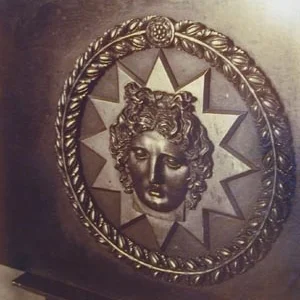Ansel Easton Adams was known for his black and white photographs of the California's Yosemite Valley. Adams was also the author of numerous books about photography, including his trilogy of technical instruction manuals (The Camera, The Negative, and The Print). He co-founded the photographic association Group f/64 along with other masters like Edward Weston, Willard Van Dyke, Imogen Cunningham and others. He invented the zone system, a technique which allows photographers to translate the light they see into specific densities on negatives and paper, thus giving them better control over finished photographs. Adams also pioneered the idea of visualization (which he often called 'previsualization', though he later acknowledged that term to be a redundancy) of the finished print based upon the measured light values in the scene being photographed.
Read MoreBerenice Abbott left the American Midwest in 1918 to study in New York City, Paris, and Berlin. In Paris she became an assistant to Man Ray and Eugène Atget. In 1925 she set up her own studio and made portraits of Parisian artists, writers, collectors and expatriates. She retrieved and catalogued Atget's prints and negatives after his death. In the 1930s she photographed New York's neighborhoods for the WPA Federal Art Project, documenting its changing architecture; many of the photographs were published in Changing New York (1939).
Read MoreThe work of Eugène Atget is one of the richest pictorial embodiments of French culture. Working as a photographer mainly in and near Paris from the late 1890s until his death in 1927, Atget made a total of about 10,000 individual images. Over the course of his long career he discovered and progressively mastered photography’s capacity to transform plain fact into visual poetry. In the rapid unfolding of modernist photography in the late 1920s and early 1930s, Atget’s work soon became the exemplar of the medium’s new creative power. No major photographer in the half-century following his death was untouched by Atget’s influence. At his death in 1927, the French government purchased a portion of Atget’s negatives; the remaining contents of his studio and greater body of his work were purchased by photographer Berenice Abbott and art dealer Julian Levy. Carefully looked after by Abbott, the collection was later sold to the Museum of Modern Art.
Read MoreKnown for American fashion and portrait photography. An obituary published in The New York Times said that "his fashion and portrait photographs helped define America's image of style, beauty and culture for the last half-century".
Read More



